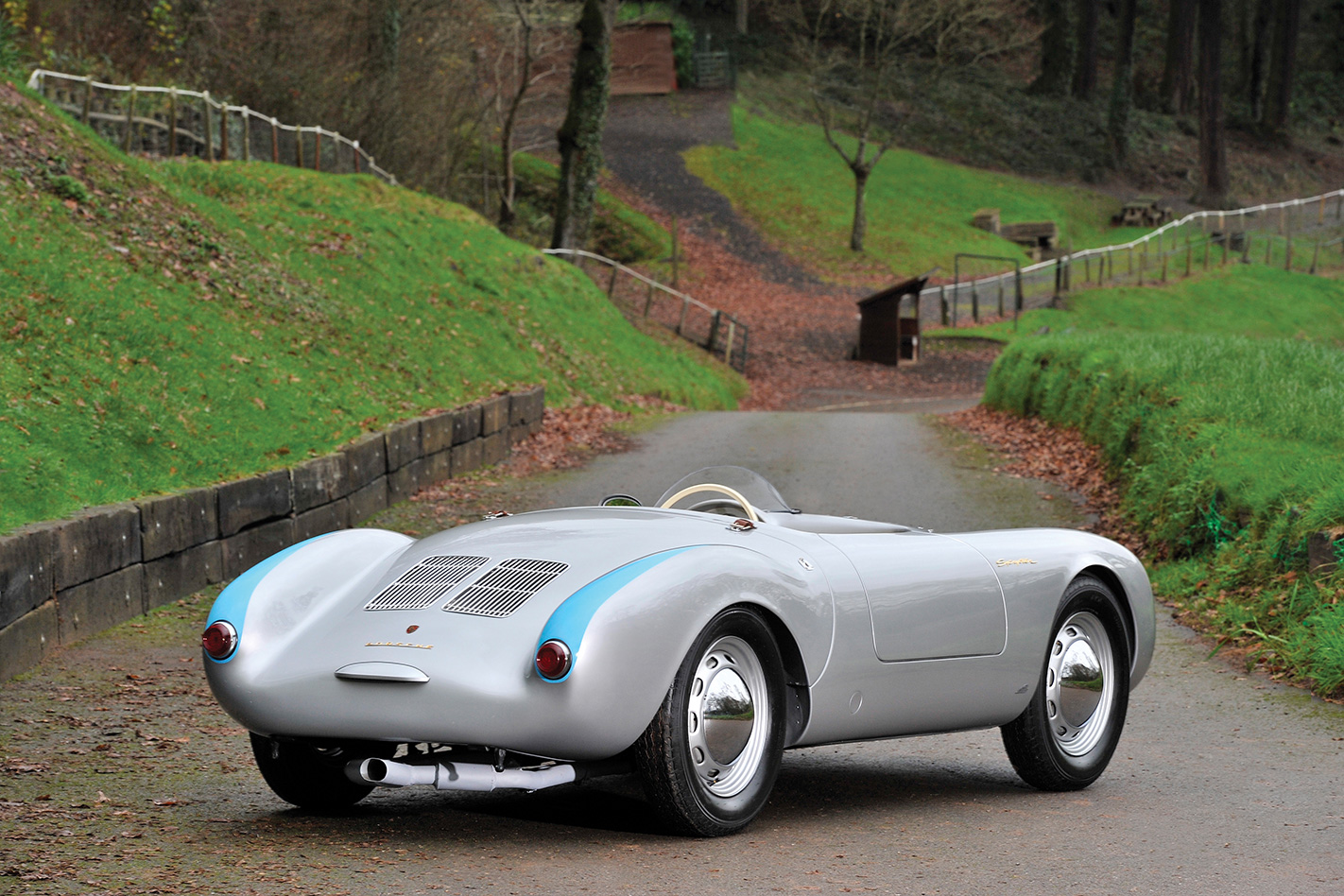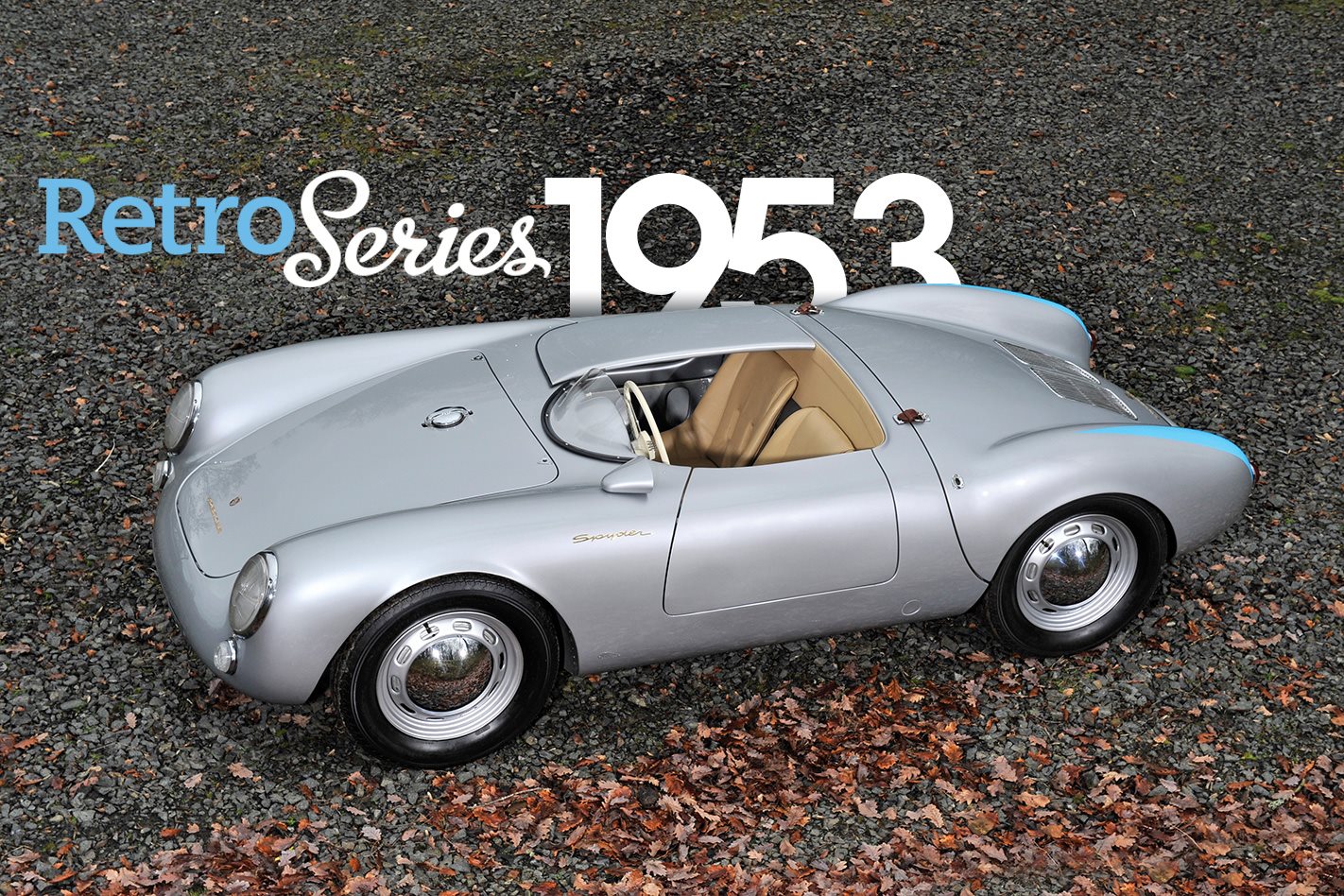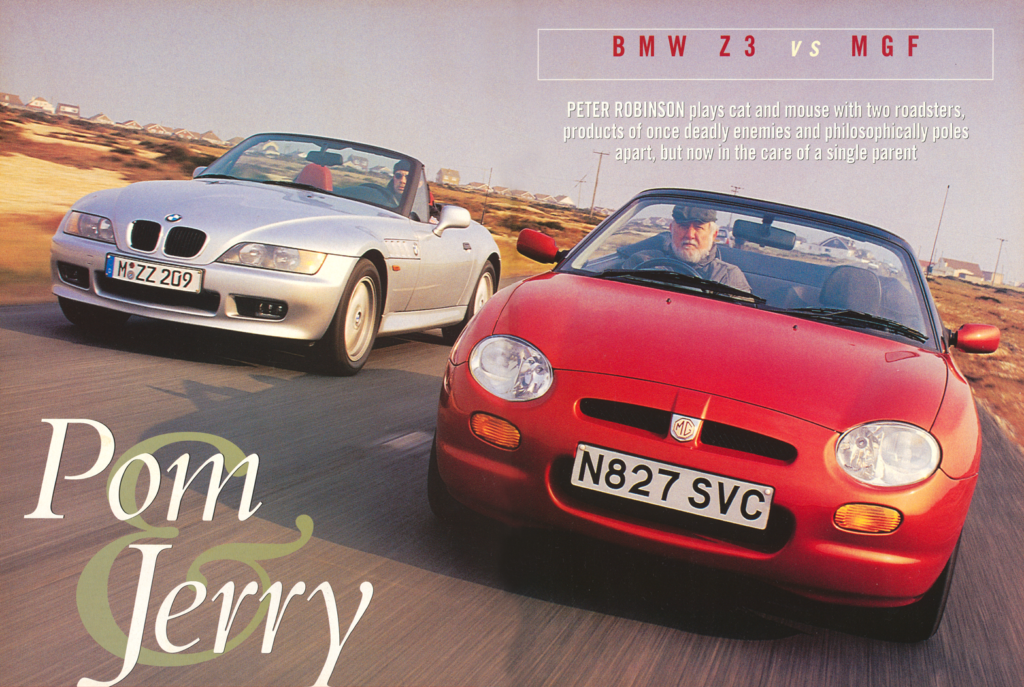Porsche’s 550 Spyder was a car of many firsts, and not only in terms of its dominance of class endurance racing in the mid-1950s.
Ferry Porsche’s car-making company was less than five years old when, spurred by maiden class victories with modified 356 coupes in the 1951 Le Mans 24 Hour and the Liège-Rome-Liège race, it produced the Type 550 as its first purpose-built racing model.
For all its firsts, the 550 would be best known for one infamous ‘last’: chassis 550-0055, delivered on 21 September 1955, would be the last car of actor James Dean, who owned it for just 10 days.
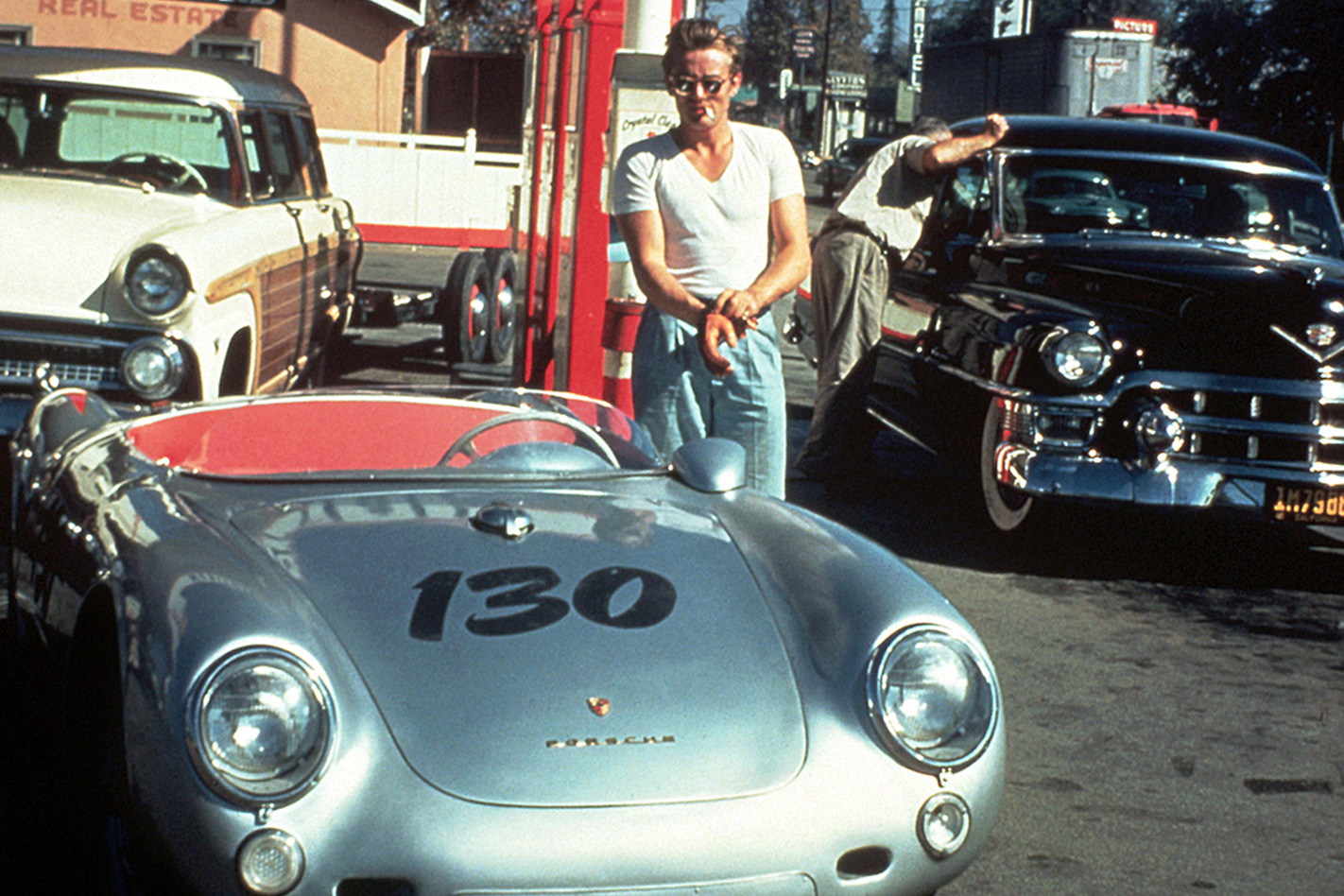
For the 550, Porsche similarly created a ladder-type chassis with the 58kW ‘1500 Super’ engine and gearbox ahead of the rear axle. The rear suspension, aft of the axle, became a leading-arm. The wheelbase was kept the same as the 356’s, at 2100mm.
The 550 debuted in May 1953 at the Nurburgring with a class win, then scored a class 1-2 at Le Mans, with aero hardtops fitted. In August, the first two pushrod-engined/leading-arm cars were superseded by the much-refined 550/1500RS, with a modified ladder chassis, trailing-arm rear suspension (with the torsion bars ahead of the engine) and pontoon-finned rear bodywork that hinged rearward as a clamshell – an industry first.
More important was the 1.5-litre Type 547 engine. With its complex, bevel gear-driven double overhead camshaft per bank, it produced 82kW at 6200rpm.

At the tragic 1955 Le Mans, 550s swept to 1-2-3 in the 1.5-litre class and a 1.1-litre version also won its class. Later in ’55 came a five-speed gearbox, followed by a substantially revised 550A/1500RS, with a full spaceframe chassis and further suspension changes. More victories followed at the 1956 Le Mans, Sebring and the Targa Florio.
But the 550’s giant-killing dominance was nearing an end, and its eventual replacement – the 718 – was already being tested at the Le Mans 24-hour of 1956. Porsche had built a total of 90 550s, including the first 15 prototypes.
Drive, arrive, race
Porsche built chassis 004 and 005 for display at the Brussels and Paris motor shows, 04 with unusual, aerodynamic ‘humpback’ bodywork. Their full-width windscreens, wipers, two upholstered seats, decent instrumentation and folding hardtops marked the beginning of Porsches as daily-drive racing cars.
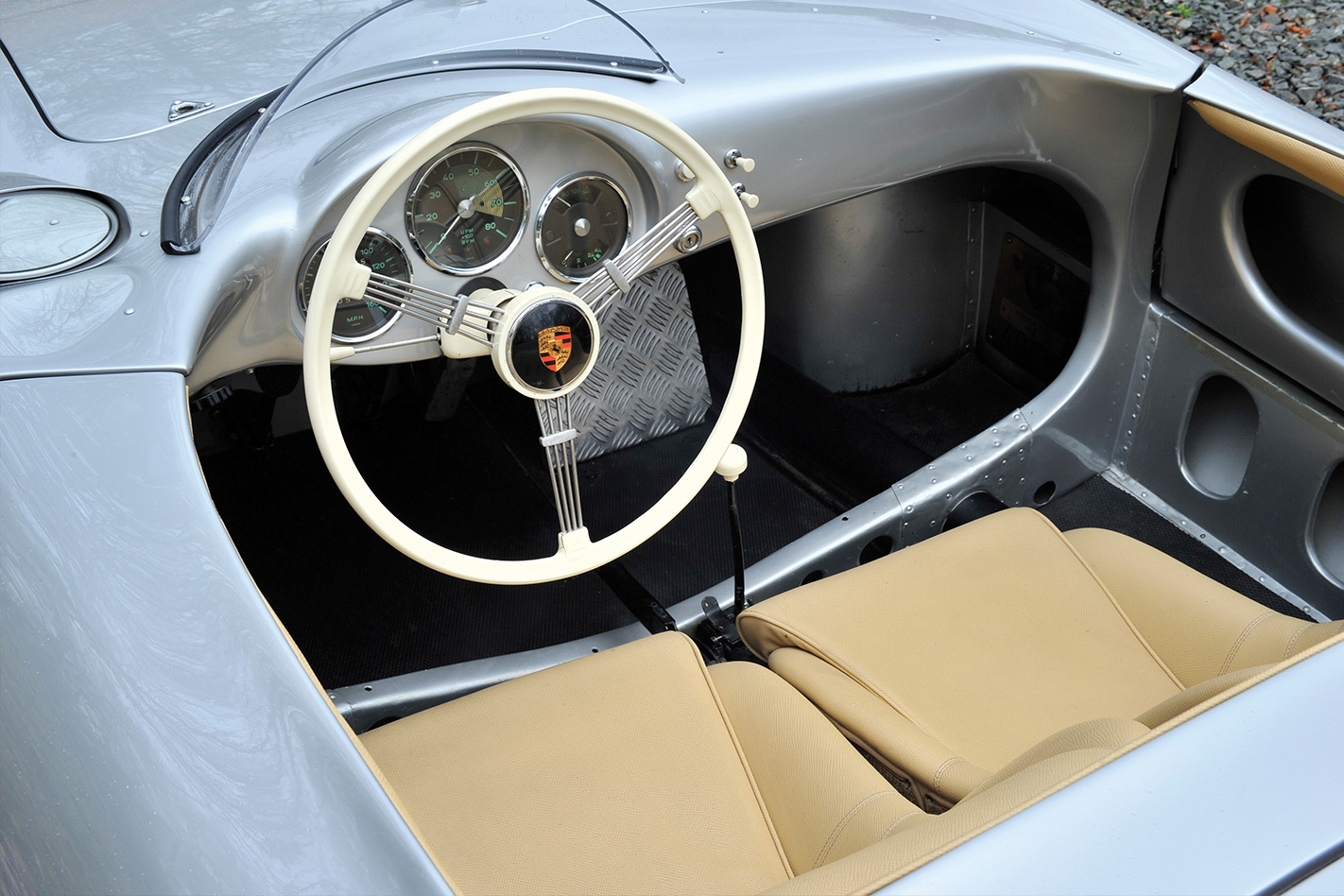
A very tidy flat
Porsche’s 1498cc, flat-four Type 547 engine was like a Swiss watch. Notably over-square (85 x 66mm), it initially made 82kW, rising to 100kW at 7200rpm by 1956. A bevel gear on the crank drove a shaft to each exhaust camshaft, in turn driving a shaft to the inlet camshaft, each cam driving only two valves per cylinder. Hemi heads featured dual ignition. Fed by Solex (later Weber) carbs.

The 550 Spyder’s chassis initially comprised large main tubes in ladder configuration, with a reinforcing lattice.
It was superseded in late-’55 by the full-spaceframe 550A/1500RS. The front suspension was by VW-style torsion bars; the rear (after chassis -01 and -02) placed the torsion bars ahead of the engine, with long (600mm) trailing arms. Brakes were drums, behind 16-inch wheels. Weight was a trifling 530kg.
